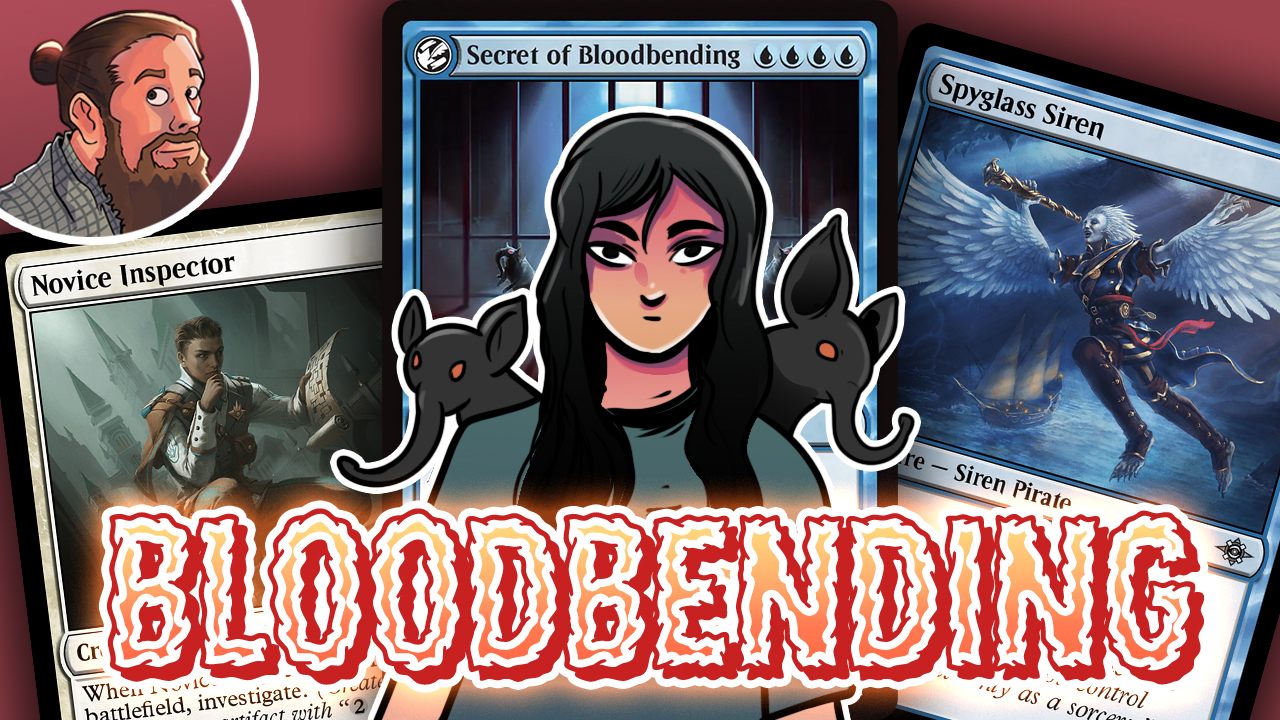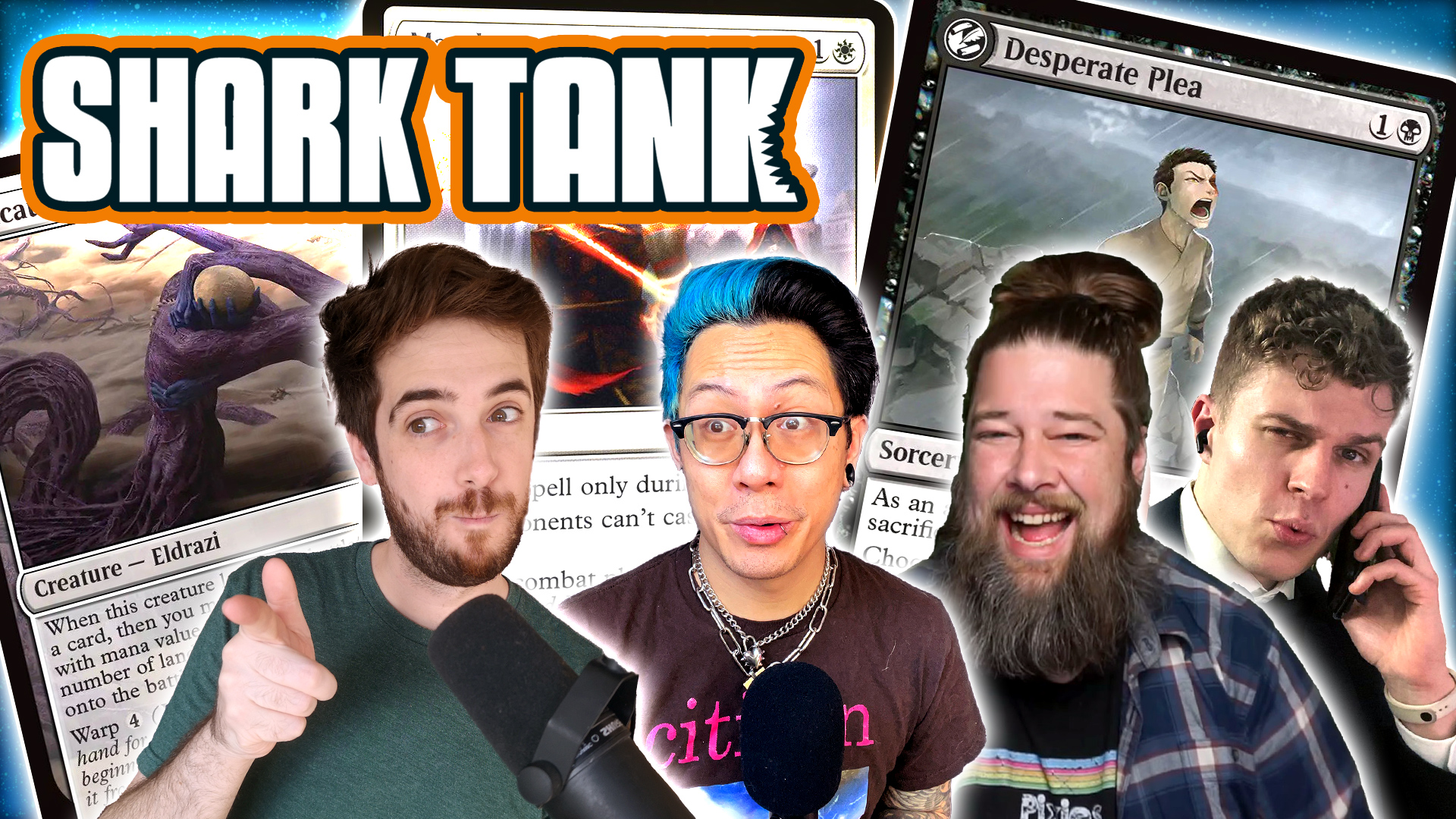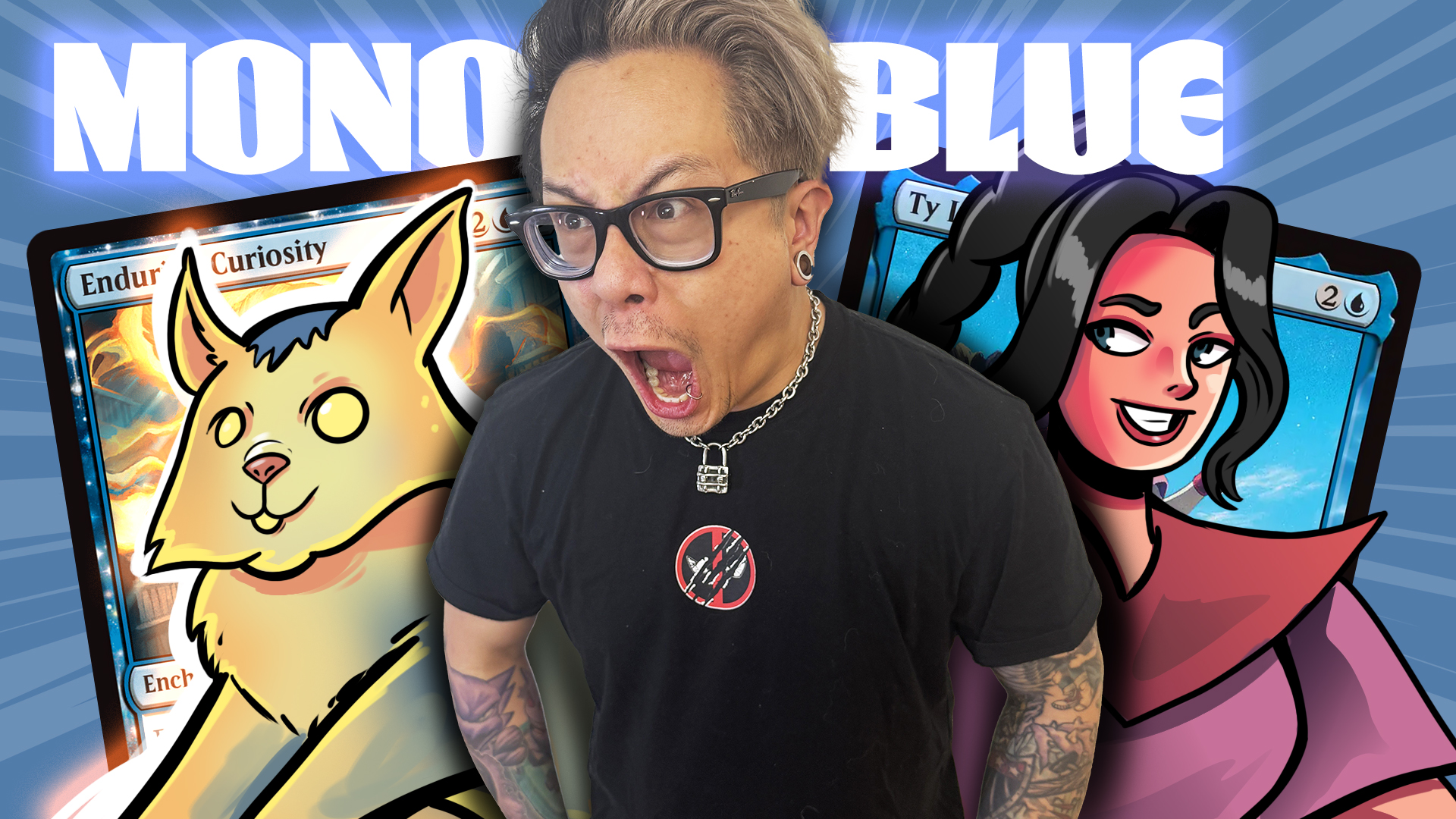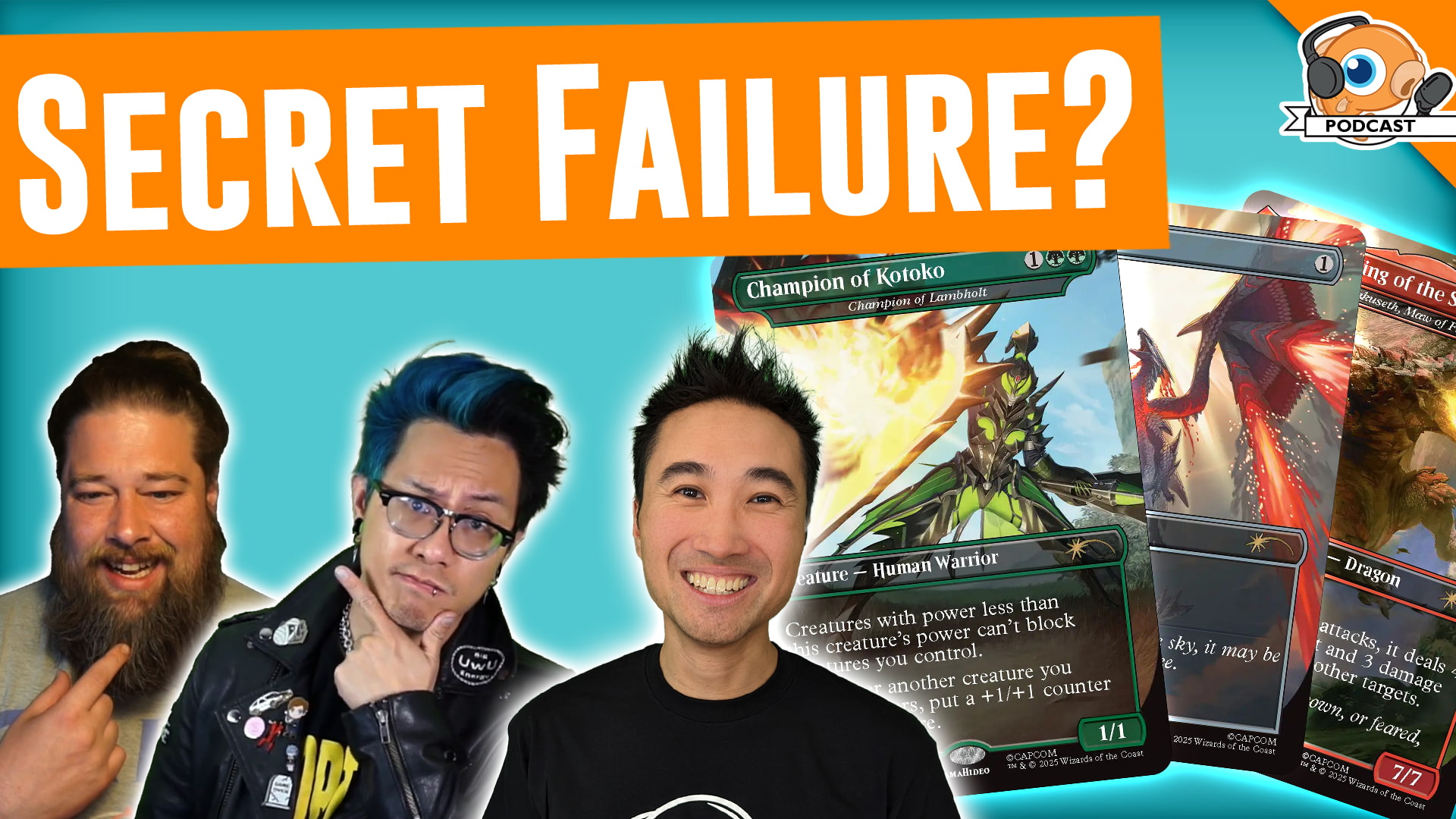Out-of-Print Booster Boxes: The Five-Star Mutual Fund of MTG?
If you keep up on the forums, you've likely come across anecdotes about Magic-savvy investors taking their money out of the stock market, and instead purchasing cases of booster boxes. They sit them in storage for a few years, and then cash in for two, three, or four times their initial investment. Whether or not these stories are true I have no idea, but it is true that sealed product has been a semi-popular speculation target in recent years. As such, the questions we are looking to answer today are: what type return on investment (ROI) can you expect from sealed product (and in what time frame), and what forces go into increasing the price of sealed product when they are out-of-print?
Current Price of Out-of-Print Sealed Boxes
Skipping over RTR block for the time being since it hasn't had much time to appreciate in value, let's work our way back through some recent out of print sets, examine the current price of an unopened booster box, the expected value (EV) of the cards in the booster box, and see what patterns emerge. Box prices are the average of the five most recently completed eBay auctions (minus 15% shipping and fees) and the EV discounts all cards under $1, foils, and basics. A full list of set expected values can be found here.
When looking at these numbers, it is important to remember that pretty much every box on this list could be bought for $100 while in-print, and that the EV of the cards in the box was about $100 (sometimes as low as $75).
| Set | Info | Box Price | Expected Value | Increase | Ave. Annual % Increase |
|---|---|---|---|---|---|
| AVR | Big, Spring, 2.5 Years | $112.20 | $63.00 | $12.20 | 4.88 |
| DKA | Small, Winter, 2.75 Years | $88.40 | $29.00 | -$11.60 | -4.27 |
| INN | Big, Fall, 3 Years | $182.24 | $70.00 | $82.24 | 27.4 |
| NPH | Small, Spring, 3.5 Years | $259.08 | $149.00 | $159.08 | 45.45 |
| MBS | Small, Winter, 3.75 Years | $139.40 | $73 |
$39.40 |
10.50 |
| SOM | Big, Fall, 4 Years | $150.96 | $77 | $50.96 | 12.72 |
| ROE | Big, Spring, 4.5 Years | $475.49 | $171 | $379.49 | 84.33 |
| WWK | Small, Winter, 4.75 Years | $550.46 | $141 | $450.46 | 94.88 |
| ZEN | Big, Fall, 5 Years | $442.00 | $269 | $342.00 | 68.40 |
| ARB | Small, Spring, 5.5 Years | $184.11 | $109 | $84.11 | 15.29 |
| CON | Small, Winter, 5.75 Years | $264.52 | $160 | $164.52 | 28.61 |
| SOA | Big, Fall, 6 Years | $148.85 | $89 | $48.85 | 8.41 |
So what does this chart tell us? Right off the bat, it is clear that sealed booster boxes are worth more down the road than they are when they are in print (with only Dark Ascension as the exception). At the same time, we started our discussion by talking about how the forums claim that some people are pulling money from the stock market to buy sealed booster boxes, but is this really a good strategy? For this, we need to take a look at how much money you can make in the stock market.
If you look over a list of the top performing mutual funds, you'll see that while some funds can post huge returns over a short period (one to three years), the highest five-year return is somewhere in the neighborhood of 40 percent (to be fair, five years ago we were right in the middle of the Great Recession, which is likely bringing down the average a bit). If you look at the three-year return, you'll see that a few biotech funds have posted a strong 70+ percent ROI, but most of the good funds fall somewhere between 40 and 55 percent. If we accept this number as a good return on investment in the market, that would suggest that most Magic sets over the past five years have outpaced the market as far as growth.
At the same time, there is little doubt that holding sealed product is more risky than holding a five-star mutual fund, because with the booster box, you are basically buying stock in only one company: Wizards of the Coast. If something suddenly goes horribly wrong with Wizards of the Coast, you stand to lose quite a bit (although sealed boxes will probably maintain some amount of value). This being said, Magic is pretty much the gold standard of TCG's, so if you are going to put all your money into one card game company, Wizards is probably the correct choice.
Does Set Size Matter?
If we break down the data by set size, we end up with six small sets and six large sets. Overall, the six large sets have an average annual return on investment of 34.37 percent and small sets have an annual average ROI of 31.74. But these numbers are a bit deceiving. If we discount Zendikar block as an outlier (don't worry, we will talk more about Zendikar, Worldwake, and Rise of the Eldrazi in a minute) we find that the large sets post an average yearly gain of 13.35 percent, while the five small sets average 19.11 percent (even including the loss taken from holding Dark Ascension boxes). All in all, it seems like small sets have an advantage as far as growth potential, although more recent sets like Dark Ascension (and likely Dragon's Maze as well, although RTR block is not part of my sample) is discomforting.
What About Seasons?
Although I've titled this section "What About Seasons," it could just as easily be titled "What About Set Order." Whether you call them fall, winter, and spring, or first, second, and third, it really doesn't make any difference.
Fall sets have what seems to be a natural disadvantage of always being large. If we look at all four sets, we find an average annual ROI of 29.23 percent. However, Zendikar accounts for almost half of that return, as the other three fall sets only average 16.17 annually.
Unlike fall sets, winter sets have the built in advantage of always being small (at least in our sample). Winter sets average a 32.43 percent annual return, but this number is greatly boosted by WWK (the highest ROI set in our sample). Without Worldwake, small winter sets only average an 11.44 percent increase per year.
Spring sets are a mixture of large and small, and are the beneficiary of the "third set effect" which refers to the tendency for spring sets to be less opened (and printed) than fall or winter sets. Overall, spring sets come in with the highest average ROI at 37.46 percent. Even discounting the high-return Rise of the Eldrazi, the spring set average is still strongest, coming in at 21.87 percent per year.
All in all, this suggests that spring sets, large or small, are the best sets to invest in (not really a surprise) followed by the big fall sets, with small winter sets bringing up the rear.
Does EV of the Cards in a Booster Box Drive Prices? (Or, what's the deal with Zendikar block?)

The scatter plot above shows the relationship between the expected value of the cards within a given booster box and the value of the booster box unopened. If there was a perfect correlation, all the sets would line up neatly along the black horizontal line according to their EV. As you can see, the correlation is pretty strong, with higher EV sets commanding more for an unopened box, and lower EV sets demanding less, except for the very noticeable exception of Zendikar block, which is all over the map. So what is going on with Zendikar block? Here are some of my theories.
Misunderstanding of the EV of Foils
The site I used for the EV of singles in a box does not include foils in the EV calculation, so maybe the out-of-whack EV to box price of Zendikar block has to do with the high number of pricey foils in these sets. If you look a little deeper at how much the potential of pulling, for example, a foil Jace, the Mind Sculptor adds to the EV of a booster box, you will find out that this is simply not the case.
According to an old article by Ben of SCG, the odds of pulling a foil are as follows: a foil common every 12 packs, a foil uncommon every 18 packs, a foil rare every 36 packs, and a foil mythic every 216 packs (6 full boxes). This means, on average, to open one foil Jace, the Mind Sculptor you will need to open 60 boxes. Even if we round up the value of the foil Jace, the Mind Sculptor to a full $600, the fact that any given box of Worldwake could hold a foil Jace only adds $10 to the expected value of the box — not nearly enough to explain the low-EV high-box price phenomena.
How about a rare like Scalding Tarn, with a foil value of nearly $200? How much does the chance of opening a foil Scalding Tarn add to the expected value of cracking a Zendikar box? The answer is even less than the potential of a Foil Jace adds to Worldwake. If we go by the numbers Ben cites, we can expect to open a foil Scalding Tarn once every 53 booster boxes, which means foil Scalding Tarns adds a mere $3.77 to the price of a Zendikar box. All five fetchlands together only increase the Zendikar box EV by about $15.
So, in reality, it's not the expensive foils that are throwing the calculations out-of-line, instead, I believe it is the average players misunderstanding of just how little expected value a foil mythic or rare actually adds to a box.
The Lottery Effect
On the other hand, maybe people do understand that their odds of opening a foil Jace, the Mind Sculptor or Scalding Tarn is quite small, and that these extremely rare cards don't add much to the overall EV of a booster box, but they simply do not care. My grandmother is a scratch off addict, and also a smart woman who understands that she is throwing away some of her retirement money whenever she buys a lotto ticket. Likewise, I find my self obsessively drafting Tempest block every time it comes online because I want to crack a Wasteland, while drafting Urza's block (which may actually have a higher EV, but has no super high-end cards) doesn't have the same emotional appeal. The feeling never get's old. I was watching @NumotTheNummy, who probably drafts more than anyone on MTGO, and even he stills gets a little giddy when he opens a Vendilion Clique and a Blood Moon in the same draft with his trademark "Get the Sleeeeeve." Opening a foil Jace or Tarn is a once-in-a-lifetime type event for most players (like winning $500 on a scratch off), and it is an event that contains some amount of value that doesn't show up by crunching the numbers. How do you put a value on the feeling of joy and accomplishment? How do you put a price on being the envy of your playgroup? Or having a great story to tell at every FNM you play from now until forever?
The "Great Draft Format" Effect
There are really only three reasons to buy out-of-print booster boxes. 1.) You have no understanding of expected value, and are hoping to win the lottery. 2.) You are buying them as an investment, hoping to sell them down the road for a profit. 3.) Your planning on drafting.
Rise of the Eldrazi is widely held as perhaps the greatest draft format ever. Innistrad (which is also above the curve for high box price, low-EV, but no where near the outlier of ROE) is also generally put among the top three draft formats of all time. If I was getting together a group of my friends to draft, and entertainment (rather than cost) was the only objective, I would buy one of these two boxes and I don't think I'm alone in this sentiment. Sure, we are all going to lose money drafting, but we are going to have a damn fun time doing it.
Basically, it seems likely that people buying Rise of the Eldrazi (and to a lesser extent Innistrad) are not motivated by how much value they can expect to open, but by how much fun they can expect to have.
In Sum
It's important to remember that the lottery effect, a misunderstanding of EV, and draftability are all just theories on why Zendikar block is so out-of-line with other sets. If you have any others ideas let me know in the comments, but my best guess is that people are willing to pay more for Worldwake than it is actually worth in (often misguided) hopes of winning the lottery by opening a Jace, the Mind Sculptor and people are willing to pay more for Rise of the Eldrazi and Innistrad because they are fun to draft.
A Bit on the Future of Khans of Tarkir Boxes
If we assume that some combination of having a chance of winning the lottery, draftability, and lack of EV understanding is what causes some booster boxes to increase in price far more than they should based on the expected value of opening the box, the future looks bright for Khans sealed product. While perhaps not quite to the level of INN or ROE, KTK is generally viewed as a very good, if not great, draft format. Three to five years from now (especially with the finite supply of sealed ROE and INN boxes slowly drying up) there is a very real chance that KTK will be the "it" block for people looking to rehash their memories of a great draft format with a group of friends without spending an crazy amount of money. There will also be some number of people who think the chance of opening a Polluted Delta or foil Bloodstaine Mire means that opening a KTK box is a good idea (even though it is not), and some amount that will just be chasing that great FNM story about "the pull of a lifetime."
While the overall trends of the yearly returns on sealed booster boxes has been overwhelmingly downwards since Zendikar block, Innistrad and New Phyrexia suggest that newer, more heavily printed sets can still post great gains - if you pick the right ones. I believe that Khans of Tarkir has all the characteristics of a set that should see big gains in three-to-five years after it goes out of print. If you are looking for an investment in sealed product, now might be the perfect time to take the plunge.
Conclusion
Nearly every Magic set between Shards of Alara and Avacyn Restored has equaled or beaten five-star mutual funds in return on investment over a three-to-five year span. However, it is important to note that there is no guarantee that this trend will continue (as the new two-set block format could get rid of some of the most profitable single-set-draft boxes (like ROE and Innistrad), or the overall growth in the game could slow down). Plus using sealed booster boxes as one of your primary investments is a risky strategy, since your investment is almost completely tied to the health of just one company.
So, is it worth pulling your money out of the stock market and putting it into cases of Magic cards? You'll have to decide for yourself, but for me, sealed product seems more like a solid part of an investment strategy rather than an entire strategy in and of itself. Even then, not all sealed boxes are worth buying, so you need to do your research and be selective. This said, researching and writing this article has pushed me towards picking up a case of Khans of Tarkir and sticking it in a closet for a few years.
Anyway, that's all for today. Let me know your thoughts in the comments or @SaffronOlive on twitter. There is also a lot more data to be crunched in regards to sealed product, including foreign to English prices, commander decks and other supplemental products, or simply just going further back in time through more sets. If any of this interests you, please let me know, and I'll write about it in the future.
Until next time, may all your Jaces be foil.













